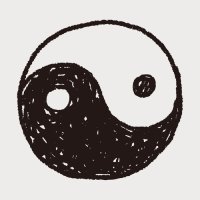Yin and Yang: The Founding Principal of Chinese Medicine
 The concept of yin and yang is simple yet very insightful and profound. Scholars have traced its first known reference back to the Book of Changes, which is said to be written around 700BC. It is believed to be the most defining concept within the theory of Chinese Herbal Medicine and acupuncture.
The concept of yin and yang is simple yet very insightful and profound. Scholars have traced its first known reference back to the Book of Changes, which is said to be written around 700BC. It is believed to be the most defining concept within the theory of Chinese Herbal Medicine and acupuncture.
The notion of yin and yang was born out of Taoist thought. It was inspired by the observation of natural occurrences. The theory is commonly used to explain the changing of days and the seasons. In Chinese writing, the characters which are used to symbolise both yin and yang reflect this. The calligraphy strokes are said to represent mountains, horizons, the sun and clouds.
The theory of yin and yang suggests that all natural phenomena can defined via the existence of polar opposites. Further to this, there an infinite number of “shades of grey” in between in which varying degrees of these polar opposites are represented.
There are four key defining features to the concept. Below is each feature with an example.
Opposition: All phenomena has an opposite state of being. For example, hot has cold.
Interdependence: The very nature of having an opposite, enables definition. For example, the existence of hot is needed in order to define cold, and vice versa.
Consumption: Opposites exist at either end of a continuum and in between are varying degrees of each of the opposites. An increase in one opposite will cause a relative decrease in the other. For example, to cool down hot water, simply add cold water.
Inter-transformation: In the natural flow of nature will ensure that each opposite will eventually transform into the other. For example, in time hot water will cool down to become cold.




